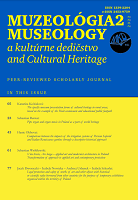Vita brevis, Ars longa – applied art and modernist architecture in Poland: Transformation of approach to applied art and contemporary protection
Vita brevis, Ars longa – applied art and modernist architecture in Poland: Transformation of approach to applied art and contemporary protection
Author(s): Sebastian WróblewskiSubject(s): Museology & Heritage Studies, Architecture, Sociology of Politics, Sociology of Art, History of Art
Published by: Univerzita Komenského v Bratislave, Filozofická fakulta
Keywords: Architecture; applied art; modernism; art; mosaic;
Summary/Abstract: The main aim of the present paper is to present the latest achievements in the process of protection of the applied art which was a part of post 1950s architecture in Poland. During the period 1945–1990 many buildings were adorned with different applied art forms: sgraffito, wall paintings, mosaics and other art techniques. The research focuses on the transformation of the society’s approach to applied art after a period of neglect and different forms of protection. In many cases applied art forms like mosaics and ceramic artworks became longer lasting elements than the architecture which they originally adorned. After the demolition of modernist constructions, artworks are frequently transferred to new architecture. That process proves that vita (architecturae) brevis, ars longa.
Journal: Muzeológia a kultúrne dedičstvo
- Issue Year: 10/2022
- Issue No: 2
- Page Range: 61-76
- Page Count: 16
- Language: English

